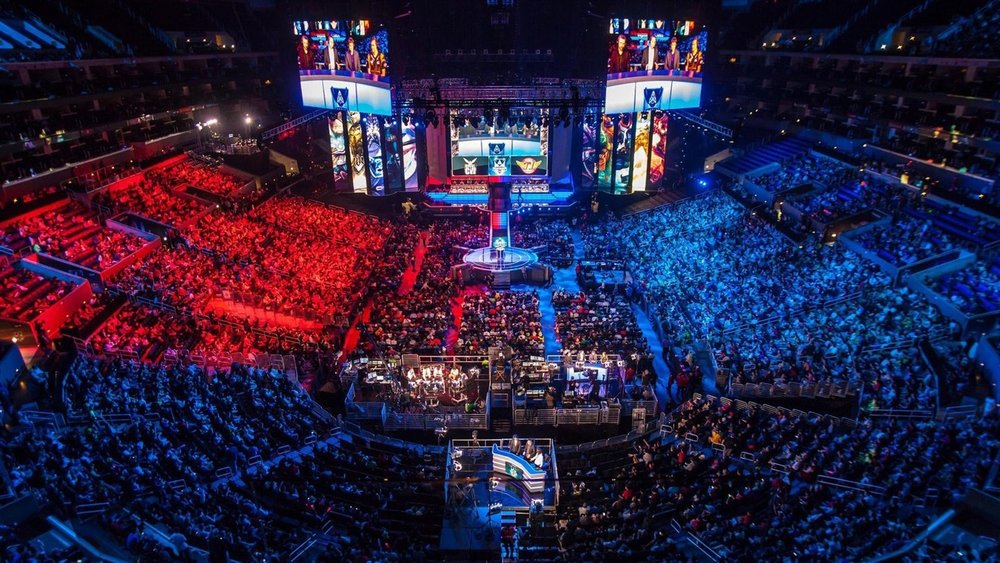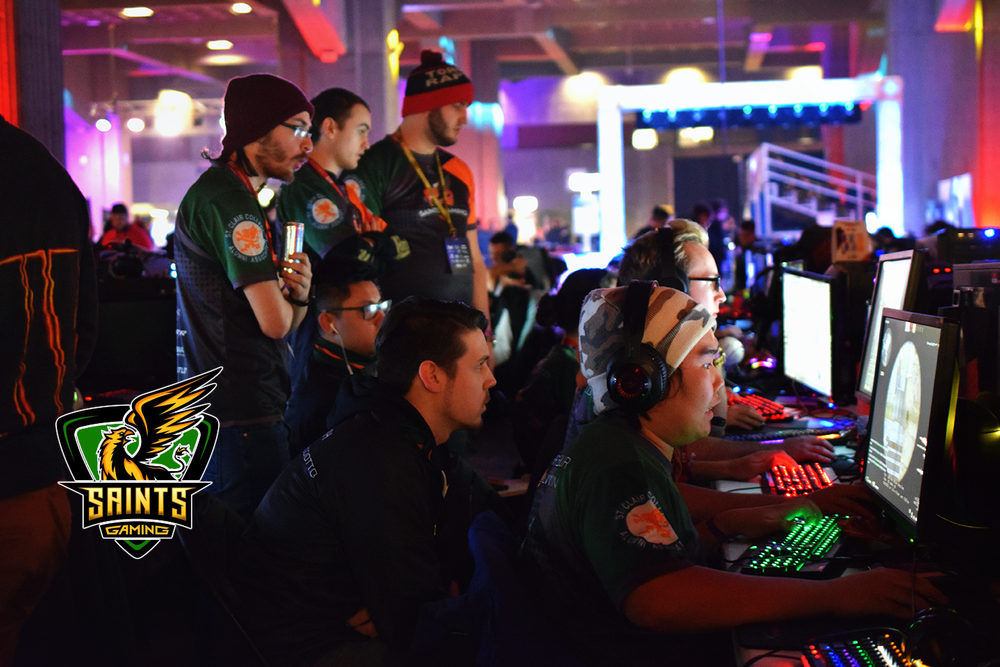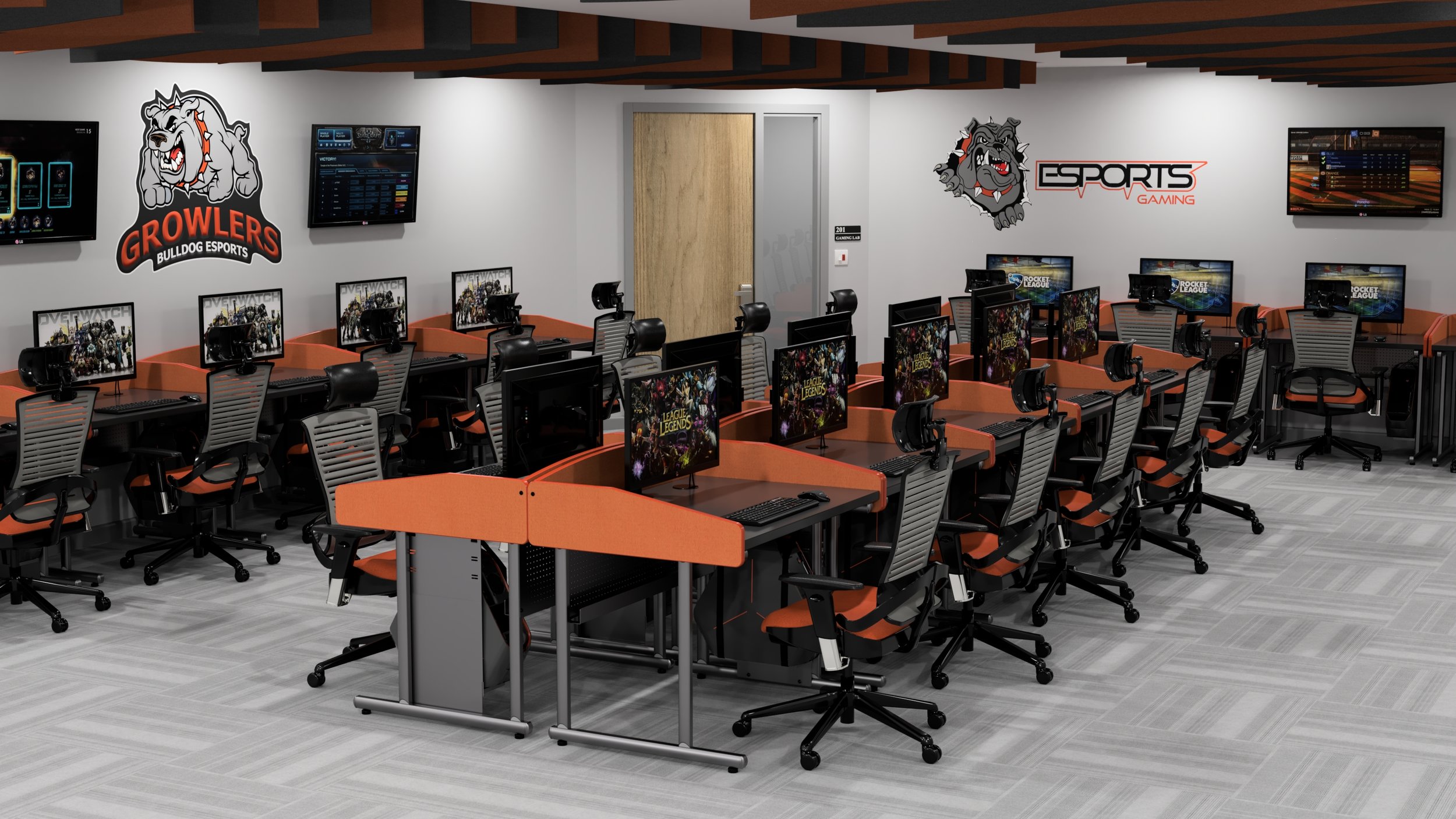Is Your Campus Prepared For The Esports Craze? What Demands Will These Programs Have On Your IT Infrastructure?
by Frank Craig Kolavo, CEO Computer Comforts, FLEXspace Gold Partner
Estimates forecast over 420 million people worldwide will be watching Esports in 2019. This explosive growth as a spectator sport has caught the attention of many colleges. Technology has long been a major element of student life. Incorporating an Esports program on campus is a natural extension of this technology-driven lifestyle.
When our college clients began calling us last year to discuss their Esports labs, I did not really understand the program. Were these café-style environments for students to play their computer games? Were these campus clubs looking for a space to play? The answer to both of these questions is NO. After some research, I have discovered the Esports movement is huge and spreading like wildfire!
The simple definition of Esports would be a multiplayer video game competition between organized teams. The key word in this definition is “organized.” Online gaming has been a part of the video game culture since the 1990s. However, it’s only been within the past 10 years that this industry has exploded with organized teams and competitive events. I suspect technological advances and increased availability of live streaming platforms have driven this surge.

If you think it’s just a passing fad, think again. Amazon paid nearly 1 billion dollars for Twitch, one of the leading livestream platforms for Esports. ESPN has devoted a section of its website to Esports, noting the League of Legends Championships brought in more viewers than the NBA Finals and MLB World Series combined! According to CNN, this live streamed event drew more than 360 million viewers in 2018.
The National Association of Collegiate Esports (NACE) was created to help develop the structure and tools needed to advance Esports in the varsity space (standardized rules, eligibility, scholarships, etc.). Think of them as the NCAA for Esports. In 2016, NACE had only 7 members with varsity programs. Today there are more the 120 colleges participating.
When I spoke with Victoria Horsley, NACE marketing director, she explained that “one of the big reasons many schools are looking into Esports is because of the low startup cost. The average cost to start a program is only $40,000. In addition, many small schools that do not offer any competitive team sports, see this as an opportunity to start a varsity program.”
Competitive team sports can play an important role for campus life, enhancing school spirit in addition to creating a healthy, vibrant social scene. All colleges and universities prosper by attracting new students. The goal of introducing any new program is to increase enrollment and therefore tuition revenue. Statistics show Esports programs are doing just that.
Many of these gaming enthusiasts might not have previously considered college as an option. The unfair stereotype of the “gamer” being an unsocial drop-out needs to be revised ASAP! The fact is, according to NACE member data, these kids actually perform better on the ACT test, with an average score of 30. Statistics also show these students are enrolling in STEM majors as well as Web Development, Networking and Mobile App programs. This should come as no surprise. Students who geek-out on Esports, either as players or spectators, are very tech-savvy.

St. Clair College was the first school in Canada to announce a competitive Esports team in 2017. Shaun Byrne, the Saints Gaming Director, told me that their “program has been very successful attracting new students and adding to student-life activities on campus”. When we discussed the outdated gamer stereotype mentioned above, Shaun said, “the only reason gamers were considered unsocial was because they didn’t really have any organized social outlets before Esports.” In addition to the team and spectator events, St. Clair has also added a 2-year diploma program for students interested in the business of Esports.
Finally, how will an Esports program impact your campus IT infrastructure? According to Shaun at St. Clair, the demands are minimal. An average team might consist of 30 players, but an entry level program can start with as few as 6 seats. Although the gaming computers will cost about $2,000––double what a college typically pays for a desktop PC––the live streaming accessories, such as webcams and headsets, are relatively inexpensive. Since most colleges already have robust broadband, there are not many additional technology-related expenses.
If you will be offering spectator seating in your “Esports Arena” you will also need to get the AV guys involved. An investment in large screen displays mirroring the game action will be necessary. Like all sporting events on campus, some students will choose to attend the event live, while others will prefer viewing parties at the student union or local pub. Will there be tailgating for Esports? That might be a subject for a future blog.
Esports arenas will vary greatly depending on budget and available space. For example, the University of Akron is reported to have the largest program in the country with 5,200 square feet of dedicated space. Akron has invested over $750,000 into Esports including 90 state-of-the-art gaming PCs and 30 next-generation consoles. The University of California, Irvine is not far behind as the first public college to build a gaming arena. UC opened their 3,500 sf arena in 2016.

Since not all colleges have the budget for these dedicated spaces, the Computer Comforts’ Hide-Away LCD table could be the answer. This innovative table was designed and patented in 2002 with thousands of happy university and college customers worldwide. Although the Hide-Away table was created for any multi-use classroom, these new gaming environments seem to be a perfect fit. The classroom can be scheduled for traditional class offerings during the week and quickly convert to a computer lab arena on gameday.
If your campus does have the space and would prefer a dedicated arena, check out the new MOBAtable design (shown in image below). With a low-profile surround each student gaming athlete has their own defined area. The same surround panels are a great component to show off the school’s team colors with hundreds of laminate options.

Please take a few minutes to flip thru our digital catalog or view our Installation Photo Gallery. Send us an email for pricing on MOBA or any of our products.
